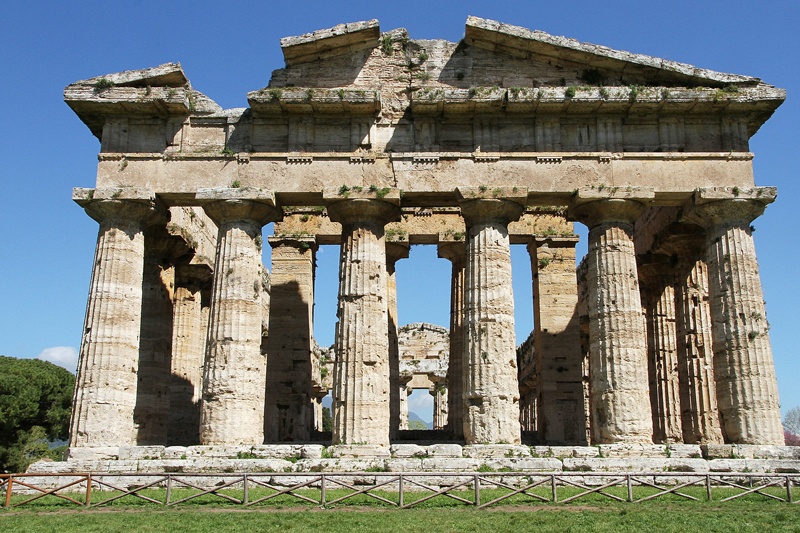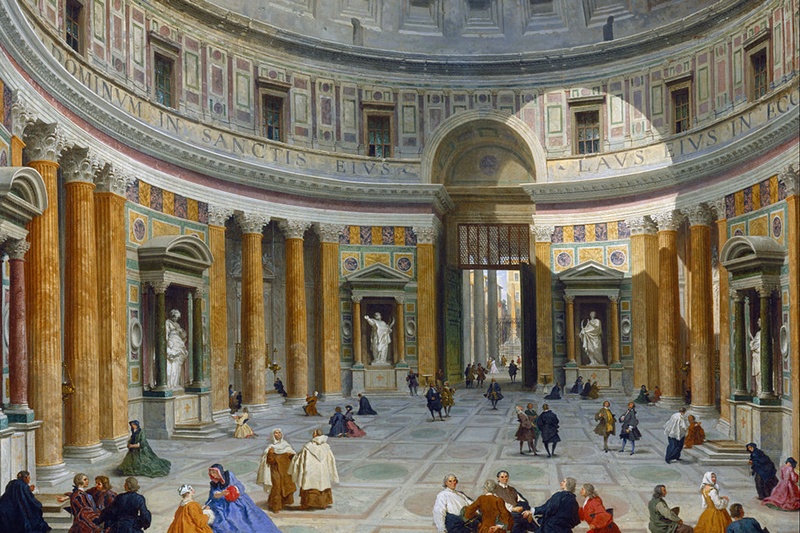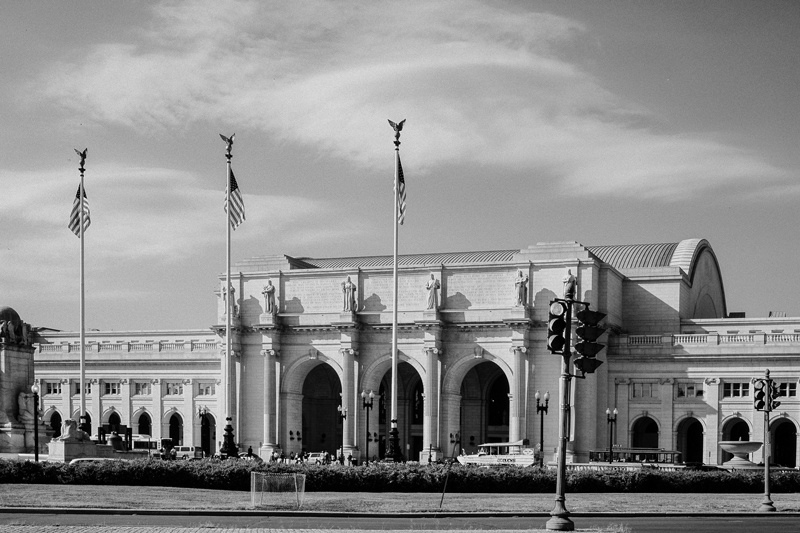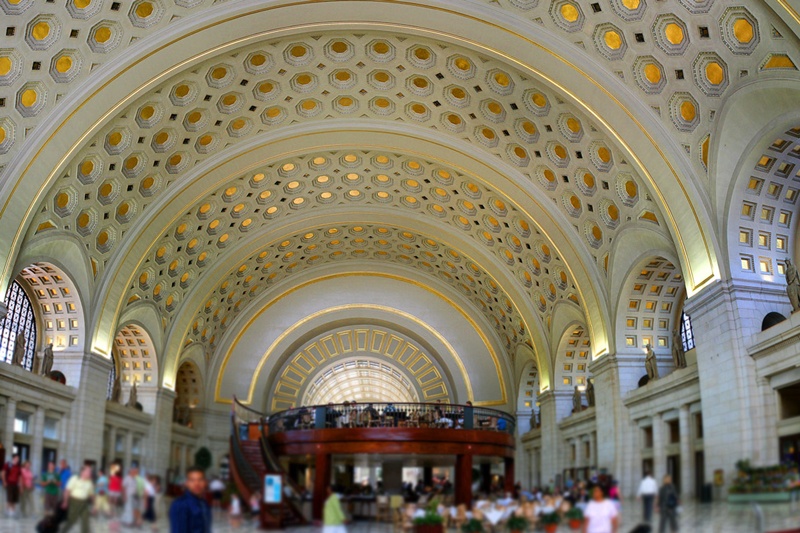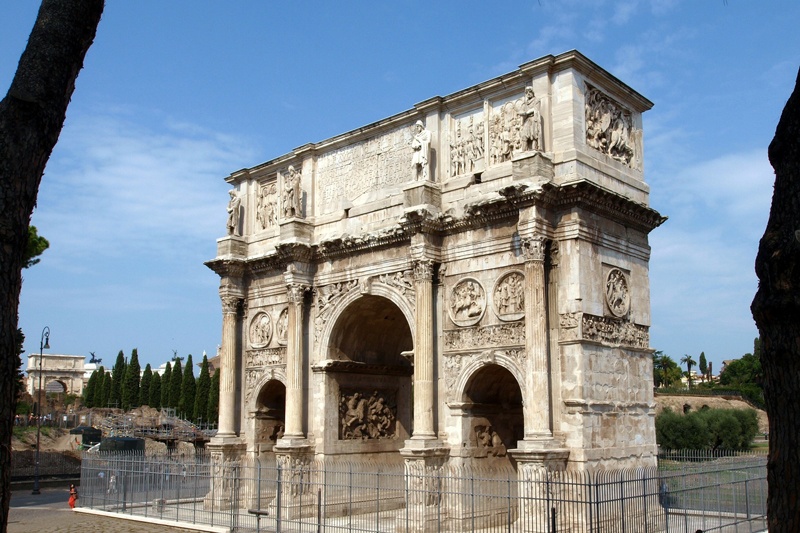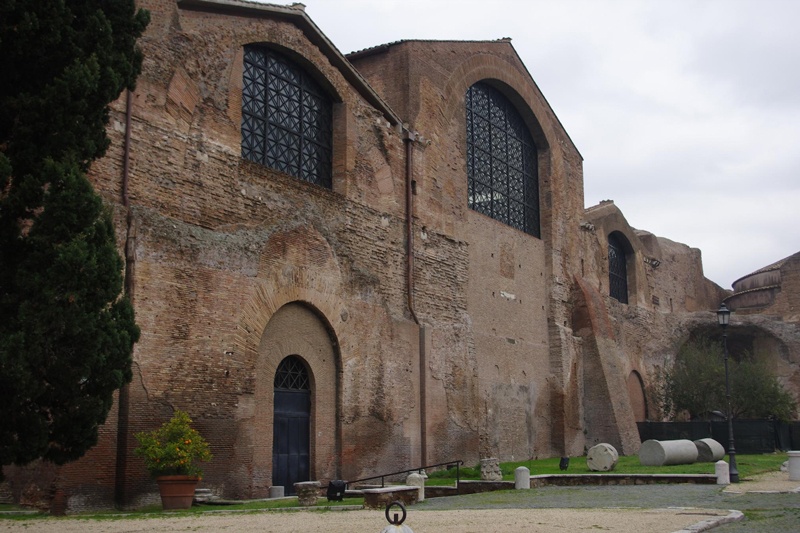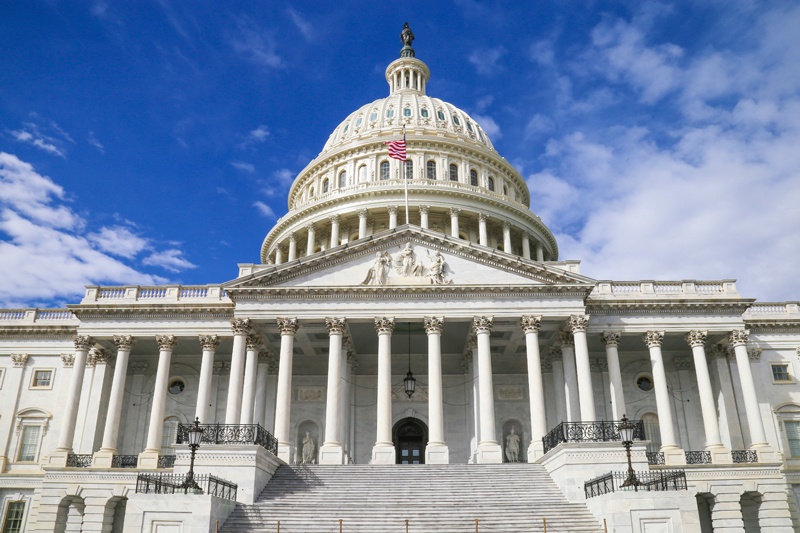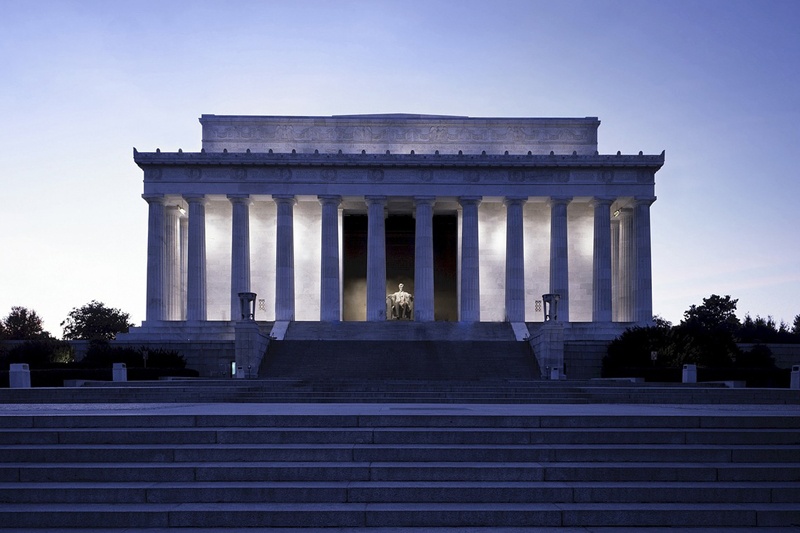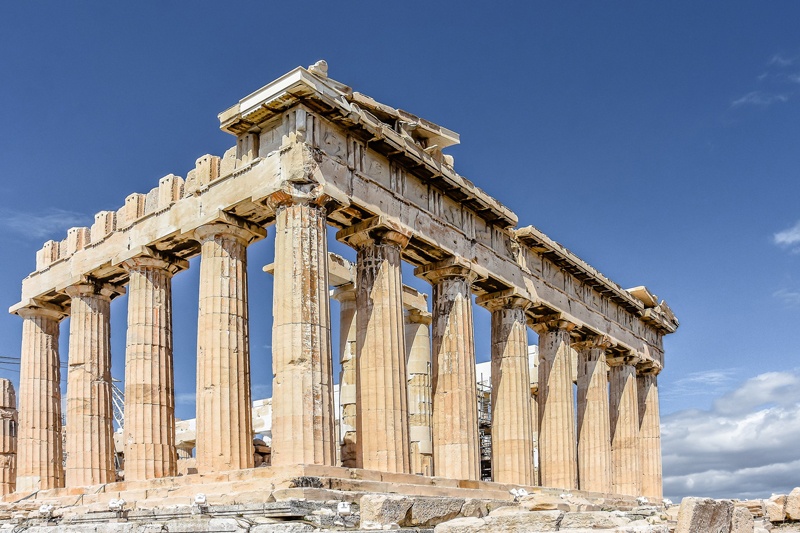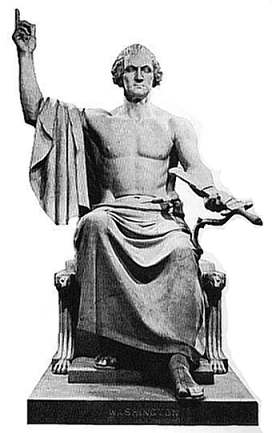 This
article will kick off a series of daily “Did you know?” articles where I
will make a simple Apocalyptic Revelation about the world we live in by
pulling the veil down from the illusion. One way I AM going to do this
is by explaining how history, places, people and things have been
changed from their original meanings in order to conceal them from the
public over the years.
This
article will kick off a series of daily “Did you know?” articles where I
will make a simple Apocalyptic Revelation about the world we live in by
pulling the veil down from the illusion. One way I AM going to do this
is by explaining how history, places, people and things have been
changed from their original meanings in order to conceal them from the
public over the years.
US Congress
Statue of George Washington by Horatio Greenough in the Smithsonian’s National Museum of American History, Washington, D.C.
One such place happens to be built on seven hills and is the capital of the United States of America, Washington DC. Not many people are aware of the fact that before this city got its current name of Washington DC, the capital was simply named after that other city on seven hills, Rome. Yes, that Capital that holds our Senate with the Roman Eagle and Roman Fascias to this current day is in fact an extension of what once was thought of has fallen, the Roman Empire.
What this means in simple terms is that yes, the Roman Empire did in fact fall in 476 AD when Odoacer, the Barbarian Germanic General deposed Romulus Agustulus, but that doesn’t mean the Roman way completely died in this 5th century takeover. Often when one Empire falls, the intelligent new conquering King and empire just doesn’t throw the old Roman baby out with the old bath water or destroy the entire old Roman system in order to have to painstakingly create a new Anglo Saxon one. No, they simply take things over and sometimes this is as easy as taking one crown off of a deposed headless kings body and placing that same crown on their new royal heads. They even make clever family alliances in the old empire with their old enemies to further the goals of the newly formed empire.
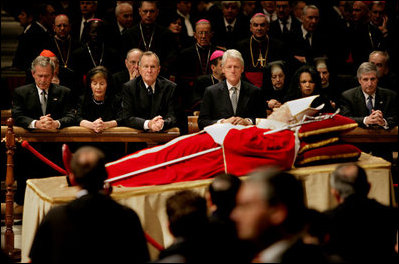
Three American Presidents close to the corpse of Pope Paul II
It is a simple change of thrones, where the old aristocracy is replaced or modified, plans changed, new blood alliances formed, new bibles written to honor these alliances, new laws set in stone of scone, names allegorically changed, places cleverly hidden and history intelligently altered.
This may come as a shock to many people who are not educated on the history of the world or the founding of America, but shock of our ignorant belief system is exactly what happens during the Apocalypse. These veils that are being torn down to expose uncomfortable truths and a light that may blind those who do not want to see the light. If this is you, you may want to click the back button on your internet browser button to get out of here or at the very least, put on a pair of sunglasses because this light of this truth is so bright, you’ve got to wear sheople shades.
What is really amazing is that this information is easily found on Wikipedia;
Rome, Maryland, was the original name of a community within Prince George’s County, Maryland, which would eventually become Washington, District of Columbia. Specifically, Rome was the original community name of Capitol Hill, upon which the United States Capitol Building sits.The facts that Washington was once called Rome was also revealed in the most recent block buster book and upcoming movie by Dan Brown called the Lost Symbol. Therefor, this Revelation is going to become common knowledge in the coming years.
In 1663, the property that would become the Capitol’s site was inscribed in the Maryland property records as “Rome,” its owner a man named Francis Pope. The southern boundary of this property was shaped by a river named for the river that runs through Rome, Italy, the Tiber.
The community was part of the ten mile square tract of land which would become the American capital Washington, D.C., and its owner, Daniel Carroll, transferred the community to the federal government after the amendment to the United States Constitution sanctioning the building of the new United States capital city was ratified.
Daniel Carroll was the chairman of a three-man commission appointed by President George Washington to find a suitable location for the capital city. A signer of the Declaration of Independence, Daniel Carroll was a Roman Catholic educated by Jesuits in Maryland and France. His brother John Carroll became the first Catholic bishop in America, presiding over the See of Baltimore, which included Washington, D.C. John Carroll also founded Georgetown University.
This classic exchange between Abott and Costello really sums up our history, the fall and rise of empires and also the Brotherhood over the last few thousand years;
Abbott: Goofè Dean. Well, let’s see, we have on the bags, Who’s on first, What’s on second, I Don’t Know is on third…
Costello: That’s what I want to find out.
Abbott: I say Who’s on first, What’s on second, I Don’t Know’s on third.
Costello: Are you the manager?
Abbott: Yes.
Costello: You gonna be the coach too?
Abbott: Yes.
Costello: And you don’t know the fellows’ names?
Abbott: Well I should.
Costello: Well then who’s on first?
Abbott: Yes.
Costello: I mean the fellow’s name.
Abbott: Who.
Costello: The guy on first.
Abbott: Who.
Costello: The first baseman.
Abbott: Who.
Costello: The guy playing…
Abbott: Who is on first!
Costello: I’m asking YOU who’s on first.
Abbott: That’s the man’s name.
Costello: That’s who’s name?
Abbott: Yes.
Costello: Well go ahead and tell me.
Abbott: That’s it.
Costello: That’s who?

 As
I walked past the colonnaded white buildings around the Capitol, the
National Mall and the Federal Triangle, I knew I couldn’t be the first
visitor to make a connection between Washington DC and ancient Rome.
As
I walked past the colonnaded white buildings around the Capitol, the
National Mall and the Federal Triangle, I knew I couldn’t be the first
visitor to make a connection between Washington DC and ancient Rome.
Both sat/sit on a series of hills and both were/are centres of world power.
The massive scale of prestigious buildings, the columns, porticos, iconic status, eagles and strong, straight lines would be very familiar any ancient Roman.

The roof of the final version of the Jefferson Memorial (left) is based on the Pantheon in Rome (Jefferson’s favourite building, so it is said). The Lincoln Memorial (below right) although more Greek in style, to my mind, would not be amiss in the Roman world.
And of course, there is a senate here and a Capitol(ine) Hill. At the US Capitol, Italian artist Constantino Brumidi painted George Washington ascending to Heaven, surrounded by such Roman deities as Minerva, Neptune and Vulcan. In short, the connections, imagined or real, are many.

But I discovered that one part of the area where Washington came to be built was once called Rome…
In the “Original Patentees of Land at Washington,” by Bessie Wilmarth Gahn is the record:
“No. 7.Francis Pope, owner of “Rome” on the Tyber, June 5, 1663.”
In the early records of Annapolis, one finds:
ffrancis Pope, transported since 1635; wife 1649
And in the proceedings of the early Assemblies:
ffrancis Pope—member of the Assembly in September, 1642, and 1667 and 1670, he was Justice of the Peace for Charles County, Maryland.
In an old volume of records at Annapolis, Liber 6, folio 318:
“June 5th, 1663, Lyd out for Francis Pope of this Province, Gent., a parcel of land in Charles County called Rome, lying on the East side of the Anacostian River [meaning here, the main channel of the Potomac], beginning at a marked oak standing by the River side, the bounded tree of Captain Robert Troop and running north by the river for breadth the length 200 perches to a bounded oak standing at the mought of a bay or inlet called Tiber, bounding on the north by the said Lett and a line drawn east for the length of 320 perches to a bounded oak standing in the woods on the East with a line drawn south from the end of the former line until you meet with the exterior bounded tree of Robert Troop called Scotland Yard on the south with the said land, on the west with the said river (Tyber), containing and now laid out for 400 acres more or less.”
Capt. Robert Troop’s “Scotland Yard,” itself north of the tract “New Troy” which extended far north of the Capitol and Congressional Library of today, was therefore the southern boundary of Mr. Pope’s Rome.
(Sources: http://www.genealogy.com/forum/surnames/topics/pope/3903/) Much more about the early history of the Capitol site from the US Capitol Historical Society http://www.capitolhillhistory.org/library/04/Jenkins%20Hill.html
For the love of Rome…

As Enlightenment gentlemen, the founding fathers of the new United States rather liked the idea of a representative democracy modelled on that of the Roman Republic, but they also conceived of a capital city that looked like Rome — or what they thought Rome looked like.
In fact, during the Republic (traditionally dated to 509 BC, and ending in 27 BC) Rome was largely brick, not a city of shiny marble, which came later, started under the stewardship of Augustus and his right-hand man, Agrippa.
Of course, the Roman Republic eventually fell and the Roman Empire eventually crumbled. And the sharp minded might note the irony that the first volume of Edward Gibbon’s The History of the Decline and Fall of the Roman Empire was published in 1776, the year of American Independence.
————–
New – a late addition
A bonus picture I spotted when reviewing my photos…
Arches with columns and eagles either side in perfect symmetry, single columns with eagles topping them…
Take out the electric street light and you’d be in ancient Rome.
(Or perhaps – retaining the streetlights – the in the imaginary Roma Nova itself…)
Alison Morton is the author of Roma Nova thrillers – INCEPTIO, PERFIDITAS, SUCCESSIO, AURELIA, INSURRECTIO and RETALIO. CARINA, a novella, and ROMA NOVA EXTRA, a collection of short stories, are now available. Audiobooks are available for four of the series. NEXUS, an Aurelia Mitela novella, is now out.

Rome and Washington DC
 As
I walked past the colonnaded white buildings around the Capitol, the
National Mall and the Federal Triangle, I knew I couldn’t be the first
visitor to make a connection between Washington DC and ancient Rome.
As
I walked past the colonnaded white buildings around the Capitol, the
National Mall and the Federal Triangle, I knew I couldn’t be the first
visitor to make a connection between Washington DC and ancient Rome.Both sat/sit on a series of hills and both were/are centres of world power.
The massive scale of prestigious buildings, the columns, porticos, iconic status, eagles and strong, straight lines would be very familiar any ancient Roman.
The roof of the final version of the Jefferson Memorial (left) is based on the Pantheon in Rome (Jefferson’s favourite building, so it is said). The Lincoln Memorial (below right) although more Greek in style, to my mind, would not be amiss in the Roman world.
And of course, there is a senate here and a Capitol(ine) Hill. At the US Capitol, Italian artist Constantino Brumidi painted George Washington ascending to Heaven, surrounded by such Roman deities as Minerva, Neptune and Vulcan. In short, the connections, imagined or real, are many.
But I discovered that one part of the area where Washington came to be built was once called Rome…
In the “Original Patentees of Land at Washington,” by Bessie Wilmarth Gahn is the record:
“No. 7.Francis Pope, owner of “Rome” on the Tyber, June 5, 1663.”
In the early records of Annapolis, one finds:
ffrancis Pope, transported since 1635; wife 1649
And in the proceedings of the early Assemblies:
ffrancis Pope—member of the Assembly in September, 1642, and 1667 and 1670, he was Justice of the Peace for Charles County, Maryland.
In an old volume of records at Annapolis, Liber 6, folio 318:
“June 5th, 1663, Lyd out for Francis Pope of this Province, Gent., a parcel of land in Charles County called Rome, lying on the East side of the Anacostian River [meaning here, the main channel of the Potomac], beginning at a marked oak standing by the River side, the bounded tree of Captain Robert Troop and running north by the river for breadth the length 200 perches to a bounded oak standing at the mought of a bay or inlet called Tiber, bounding on the north by the said Lett and a line drawn east for the length of 320 perches to a bounded oak standing in the woods on the East with a line drawn south from the end of the former line until you meet with the exterior bounded tree of Robert Troop called Scotland Yard on the south with the said land, on the west with the said river (Tyber), containing and now laid out for 400 acres more or less.”
Capt. Robert Troop’s “Scotland Yard,” itself north of the tract “New Troy” which extended far north of the Capitol and Congressional Library of today, was therefore the southern boundary of Mr. Pope’s Rome.
(Sources: http://www.genealogy.com/forum/surnames/topics/pope/3903/) Much more about the early history of the Capitol site from the US Capitol Historical Society http://www.capitolhillhistory.org/library/04/Jenkins%20Hill.html
For the love of Rome…
As Enlightenment gentlemen, the founding fathers of the new United States rather liked the idea of a representative democracy modelled on that of the Roman Republic, but they also conceived of a capital city that looked like Rome — or what they thought Rome looked like.
In fact, during the Republic (traditionally dated to 509 BC, and ending in 27 BC) Rome was largely brick, not a city of shiny marble, which came later, started under the stewardship of Augustus and his right-hand man, Agrippa.
Of course, the Roman Republic eventually fell and the Roman Empire eventually crumbled. And the sharp minded might note the irony that the first volume of Edward Gibbon’s The History of the Decline and Fall of the Roman Empire was published in 1776, the year of American Independence.
————–
New – a late addition
A bonus picture I spotted when reviewing my photos…
Arches with columns and eagles either side in perfect symmetry, single columns with eagles topping them…
Take out the electric street light and you’d be in ancient Rome.
(Or perhaps – retaining the streetlights – the in the imaginary Roma Nova itself…)
Alison Morton is the author of Roma Nova thrillers – INCEPTIO, PERFIDITAS, SUCCESSIO, AURELIA, INSURRECTIO and RETALIO. CARINA, a novella, and ROMA NOVA EXTRA, a collection of short stories, are now available. Audiobooks are available for four of the series. NEXUS, an Aurelia Mitela novella, is now out.
Imitatio Romae: similarities between Washington DC and the Rome
Every year, I live at least a month and a half in Alexandria, Virginia, a few miles from Washington DC (District of Columbia), a guest of dear friends.
Even here in the US, the federal capital Rome is with me, it never leaves me. Yes, because DC (as the Americans call it) was designed and built at the end of the 18th century, precisely in 1791, like New Rome, New Rome.
This imitation of Rome is not only in the monumental and most important buildings but also in the decorations of public buildings, built in neoclassical style in the nineteenth and twentieth centuries.
The National Mall
irst of all Capitol Hill, the political district housing the Chamber of Deputies and the Senate.Already in the name, Campidoglio, there are references to Rome. Then the Dome, which was inspired by Michelangelo’s dome of St. Peter’s in the Vatican.
It is interesting to note that the fresco of the dome, the “Apotheosis of George Washington”, was created by the Roman painter Constantine Brumidi, who worked in Rome for the Torlonia and for Pope Gregory XVI in the Vatican.
He then emigrated to the USA, gradually becoming the official artist of the government, eventually he was to be know as the American Michelangelo.
The Washington Monument
We continue with the largest obelisk in the world, the Washington Monument, in the middle of the Mall.This obelisk is 162 meters tall and is the largest copy of the Vatican obelisk, which is in the center of St. Peter’s Square.
National Gallery and Jefferson Memorial
Another Roman monument that the Americans are passionate about is the Pantheon.The Central Hall of the National Gallery copies it somewhat, as does the Jefferson Memorial and the same two buildings designed by the president himself as the main character in the drafting of the Declaration of Independence: the Great Hall of the University of Virginia in Charlottesville and his Villa in Monticello.
Supreme Court, Union Station and Library of Congress
The seat of the Supreme Court of that time was built in 1935. It resembles the Temple of Hadrian in Piazza di Pietra in Rome.The Union Station, the central railway station, was built to resemble the Baths of Diocletian.
The enclosure of the Library of the Congress is often interrupted by large benches in gray marble shaped like seated tombs with Roman imperial eagles at their head.
Madison Memorial Building and Watergate
Madison Memorial Building
Madison Memorial BuildingBut also the architecture of the Twenties is remembered.
In the Madison Memorial Building the facade is similar to the Palazzo delle Fontane all’EUR, a work from the 1940’s by the architect Gaetano Minnucci.
Fountains Hall (Salone delle Fontane), Rome
And finally Watergate, probably one of the most beautiful residential complexes in the world, designed by the architect Luigi Moretti for the General Real Estate Company which in the 1960’s a considerable amount of interest was owned by the Vatican.
And finally, to think a little bit of Washington, DC, in a stream now dug in the subsoil called the Tiber Creek Washington City Canal. Yes, it’s really called that: Tiber.
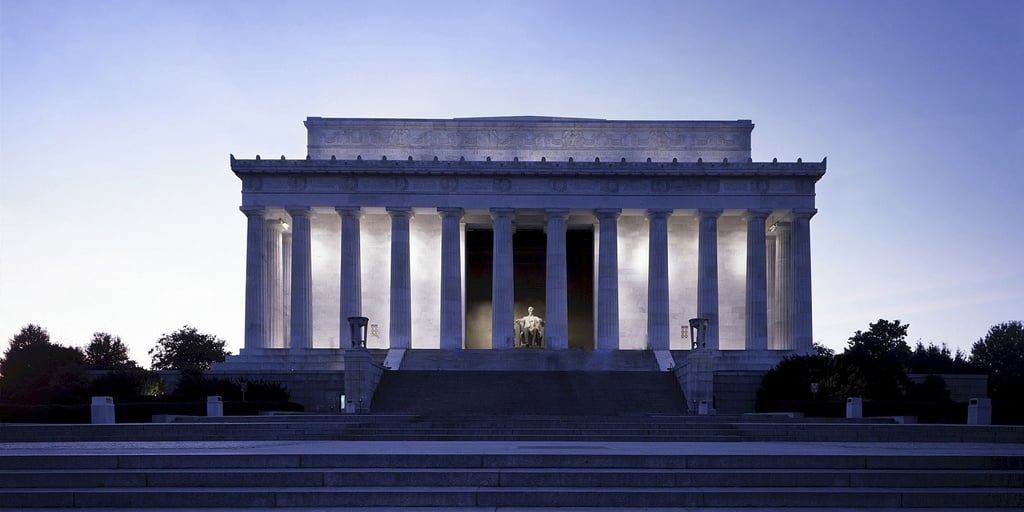
Nov
11,
2018
Maryland’s classics department looks at connections between Rome and Washington
/marylands-classics-department-looks-at-connections-between-rome-and-washington/2014/03/17/ce5f04e0-a873-11e3-8599-ce7295b6851c_story.html
Maryland’s classics department looks at connections between Rome and Washington
I don’t know what Adriano would think of D.C. today, when Metro breaks down routinely and Congress seems proud of its dysfunction. But I understood his point: With its classically inspired public architecture, Washington is reminiscent of the Eternal City.
Many Americans might not make the connection. The classics department at the University of Maryland hopes to rectify that. Last month, it beat out two dozen U.S. and Italian universities and landed a $500,000 grant from the National Italian American Foundation to study the Roman influence on American identity.
“If we can call people’s attention to the way in which, particularly during the founding era, the nation, particularly Washington, looked to Rome as a model, I think that would be valuable,” said Greg Staley, professor of classics and director of honors humanities at Maryland.
The humanities are under siege these days, as experts tell us that students should focus instead on the so-called STEM subjects: science, technology, engineering and math. I’m fine with those, but, personally, I’ve never liked a plant that was all stem. Give me some flower petals. Give me humanities.
 The ancient monument of the Pantheon, dome-shaped roof with a hole in central Rome. (Plinio Lepri/AP)
The ancient monument of the Pantheon, dome-shaped roof with a hole in central Rome. (Plinio Lepri/AP) Or maybe not so dead. Most of the English words we use are derived from Latin. We number our Super Bowls with Roman numerals. We have a Senate and a Capitol Hill.
“I’ve always loved the fact that the past is not a museum, but is a window into where we’ve come from,” Greg said.
It’s a window the Founding Fathers enjoyed gazing through. Greg said: “The myth of Rome was that Rome was founded when the survivors of the Trojan War left Troy, sailed across the sea, claimed a new land and recreated Troy eventually in Rome. Americans read that story and said that’s our story. Our ancestors came from Europe across the seas. Now we’re going to recreate Rome here.”
The Founders wanted the representative democracy of the Roman Republic, but they also thought that our capital city should look like Rome — or what they thought Rome looked like. (In fact, Greg said, during the Republic — which lasted from about 508 B.C. to 31 B.C. — Rome was largely brick, not a city of gleaming marble. The marble came later, during the Empire.)
“The Pantheon was Jefferson’s favorite building,” Greg said. “It is distinctly Roman in that it has a dome. Domes were made possible by the Romans’ discovery of concrete.”
The curved inner surface of the dome suggested the sky itself. By the time of the Renaissance, cathedral domes would be painted with religious scenes. At the U.S. Capitol, Italian artist Constantino Brumidi painted George Washington ascending to Heaven, surrounded by such Roman deities as Minerva, Neptune and Vulcan.
The new grant will allow more U-Md. students to travel to Italy as well as to study Latin and Roman culture here. Distinguished visiting scholars will be invited to speak in College Park. There are plans to create a Web site highlighting classical influences on Washington and a mobile app to provide translations of the Latin inscriptions on Washington’s public buildings and monuments.
“We want to create something people can use to see the connections themselves,” Greg said.
Of course, the Roman Republic eventually fell and the Roman Empire eventually crumbled. In a delicious irony, the first volume of Edward Gibbon’s “The History of the Decline and Fall of the Roman Empire” was published in — 1776.
“It was a constant worry in [the Founding Fathers’] minds that our republic could follow the course of Roman political history and even degenerate into an empire and fall,” Greg said.
I asked Greg why the Romans themselves thought their republic fell.
“I think they would say any system created by humans cannot prevent the destructive impulses in human nature, for example ambition and greed. . . . So, what caused the Republic to fall was that it was a system designed to control human weakness and it didn’t.”
If that’s not a lesson worth keeping in mind 2,000 years later, I don’t know what is.

